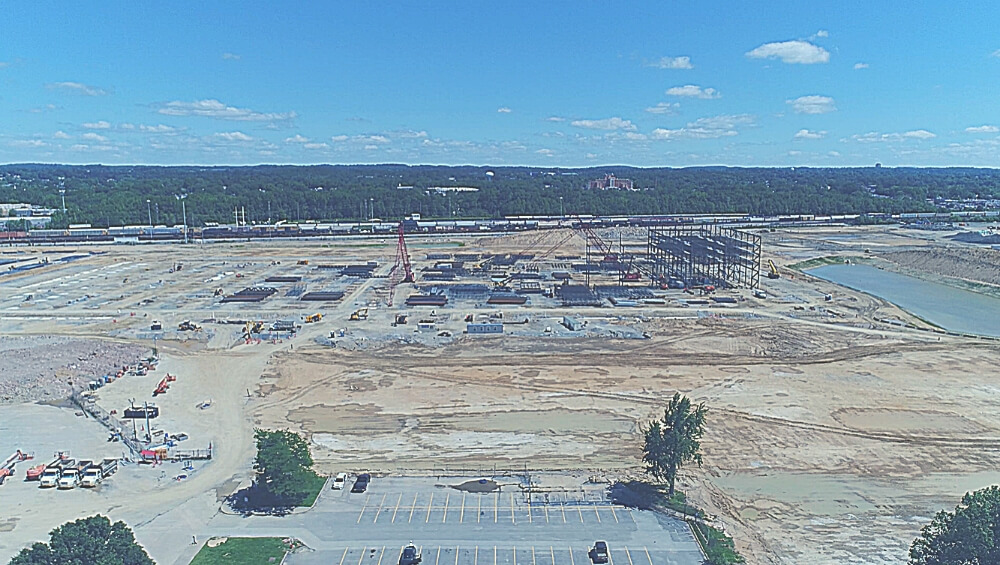Sustaining the Supply Chain

June 12, 2020 –
After COVID-19, What’s Next for Warehousing?
If it has been a while since you drove by the old General Motors plant in Newport, Delaware, you’re in for a surprise. The landmark, which closed in 2009, has been razed. A state-of-the-art Amazon fulfillment center will occupy a portion of the property.
It is Amazon’s third location in the state and the first Delaware project for developer Dermody Properties, which is known for spotting strategic sites. The company develops, acquires and invests in logistics, e-commerce and industrial real estate.
Although based in Nevada, Dermody Properties is familiar with the Mid-Atlantic area. The company has developed and owned industrial properties throughout New Jersey and Pennsylvania, including LogistiCenter at Logan in Gloucester County, New Jersey — which has a one-million-square-foot Amazon warehouse — and multiple properties in the Lehigh Valley and Central Pennsylvania.
The company has thrived for nearly 60 years by staying on top of warehouse and logistics trends — an attribute that is indispensable now that COVID-19 has disrupted the standard supply chains.
Strengthening the Weak Link in the Supply Chain
Before COVID-19, warehouse designs and distribution models increasingly accommodated the just-in-time system (JIT). The Japanese approach, which dates back to car manufacturers in the 1970s, limits the amount of capital tied up in inventory. This practice results in a smaller storage footprint and decreases the risk of having obsolete inventory.
“The day before you make toilet paper, you want the massive roll from the mill to arrive,” explains Jeffrey Zygler, a partner with Dermody Properties, who oversees build-to-suit and e-commerce projects across the United States. “And you want to make the toilet paper right before you receive an order for it to minimize the time it sits in your warehouse.”
If you are a certain age, you may have noticed this approach in grocery stores or large retailers like Target. The buildings have less room for storage and more retail room for displayed products.
Accurate inventory control and supply chain software are essential if the company wants to stay on top of its stock. Scanning devices have made this easier.
Companies like Amazon, which promise quick delivery, also use data to predict buying trends in specific areas, Zygler says. As a result, they can keep certain goods close to the likeliest buyers.
In a state-of-the-art fulfillment center, the layout facilitates the swift movement of products from storage to packaging. The buildings also must allow employees to work alongside robotics to pick, pack and ship items.
COVID-19, however, put the drawbacks of JIT in the limelight.
“Everything was just-in-time, starting at the grocery store,” Zygler says. “Markets had just enough stock for their typical demand. Distributors had just enough inventory for their usual demand, and manufacturers had just-in-time raw materials. There was no ‘circuit-breaker’ to stop the upstream surge in demand from depleting inventory at every level of the supply chain.”
Customers were creating an at-home stockpile when there was no warehouse stockpile to replenish the shelves.
Looking forward
The pandemic’s effects are still in play but suffice it to say that many companies may need more room in their warehouse as a buffer. “It may not happen at the fulfillment center, where workers are packing the items for the consumer, but it might happen in suppliers’ warehouses, where pallets are stored to restock the fulfillment center,” Zygler says.
Meanwhile, COVID-19 has led to policies, procedures and protective structures such as plexiglass partitions that are prompting redesigns and reconfiguring.
The main driver for more space — both in size and in number — is the consumer. Even before COVID-19, people were ordering more online, Zygler says. During the pandemic, people grew accustomed to getting everyday goods and food delivered to their door. That’s not likely to change. Given consumer concerns about COVID-19 exposure in retail shops, it could increase.
The e-commerce company isn’t the only business needing more space. Carriers that deliver the goods need room to sort and hold packages waiting for transport.
The need for speed is another reason for more warehouse hubs. Delaware’s location is an advantage: The Boxwood Road site is less than 10 miles from the Maryland, New Jersey and Pennsylvania state lines, two miles from the I-95/I-295/I-495 junction and four miles from the Port of Wilmington.
What the Greater Philadelphia area lacks in open land, it makes up for in property that’s ripe for reuse. The GM plant is a prime example. The property is unsuitable for residential use, Zygler notes. Capping it with concrete, asphalt and warehouses is better than letting the site slide into disrepair. The old buildings, meanwhile, weren’t conducive to current business practices.
If all goes as planned, the Amazon facility on Boxwood Road should be complete by the fall of 2021. Dermody Properties, which typically acquires or develops and builds facilities with its capital, is looking for more opportunities in Delaware, Zygler says.
“The State of Delaware and New Castle County collaborated with us to make this project a reality,” he says. “We are impressed with their level of service, and it’s a location where we want to do more business.”
Newsletter Sign Up
Stay Up To Date With Delaware